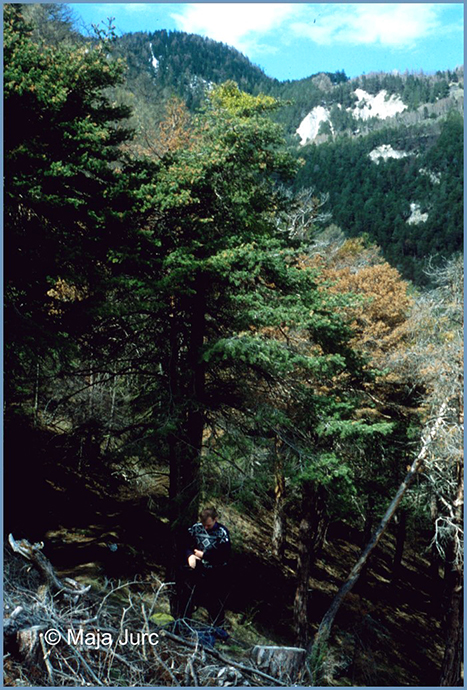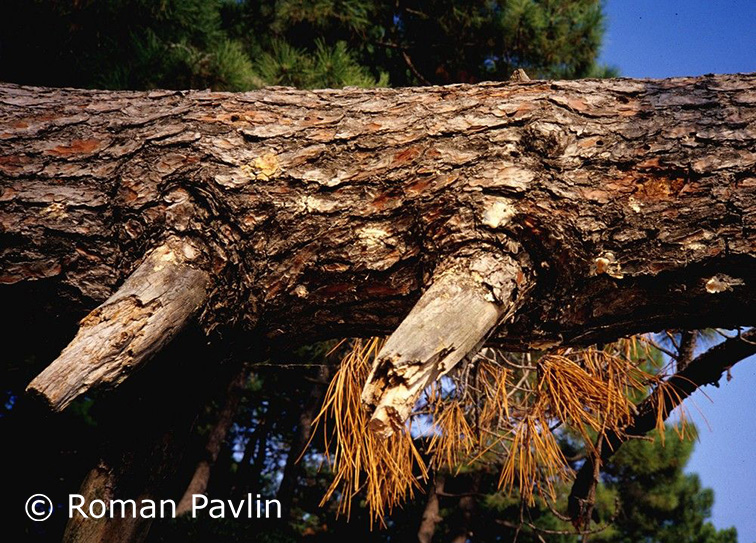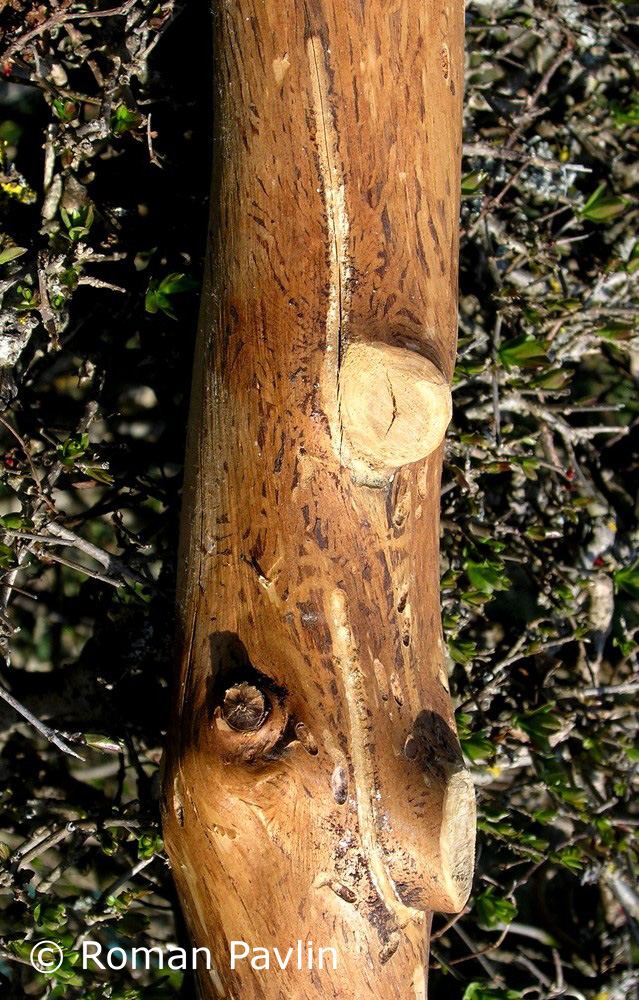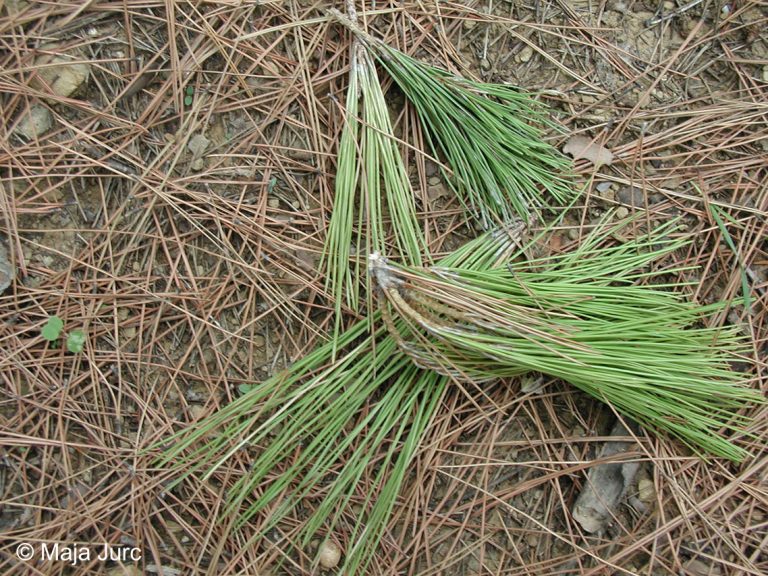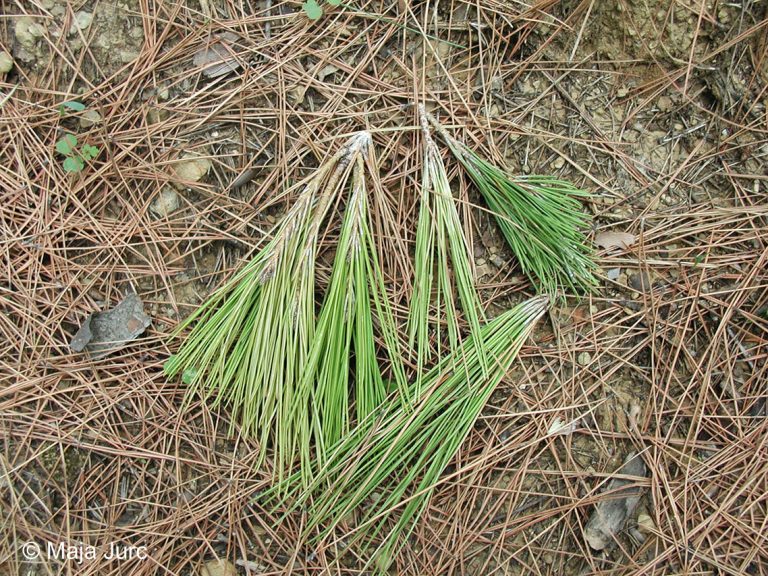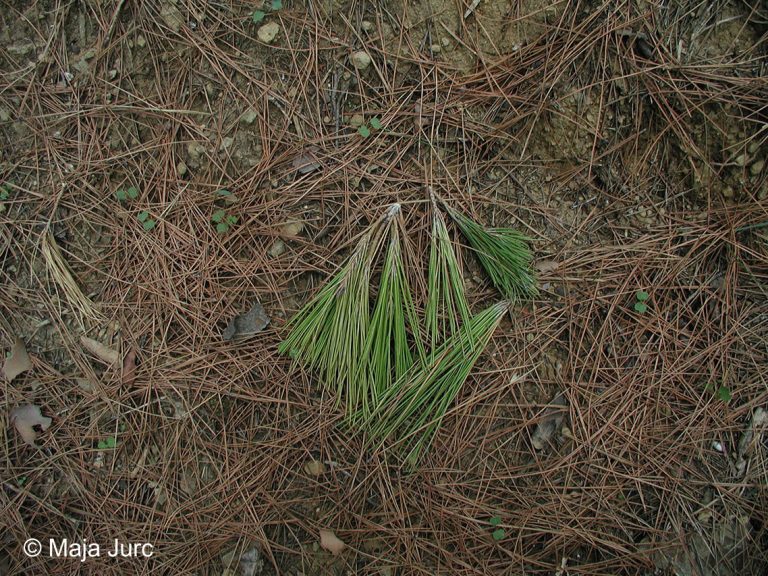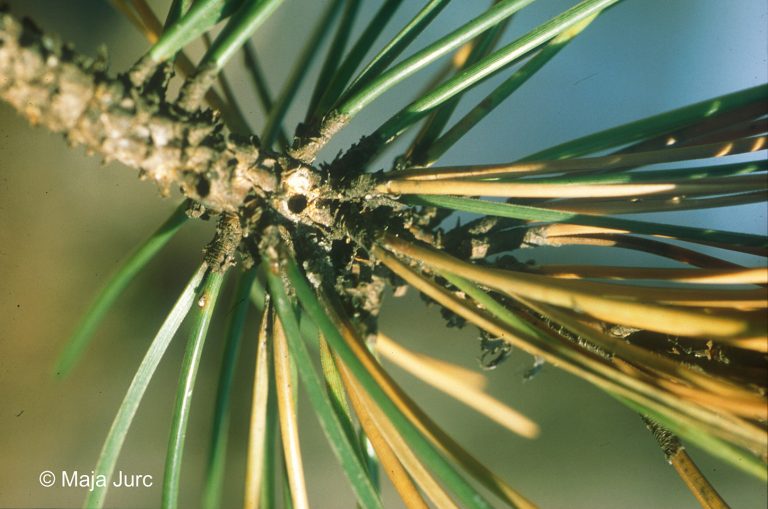09.01. Tomicus destruens (Wollaston, 1865)
Presence
E: CR FR GR IT PT SL* SP ST UK
N: AG MR
A: CY IS TR
Older catalogs and keys – citations of name
Pfeffer 1995: Tomicus destruens (Wollaston, 1865) (Hylurgus destruens Wollaston, 1865; Blastophagus destruens Lekander, 1971; B. piniperda Schedl, 1923); Vega & Hofstetter 2015.
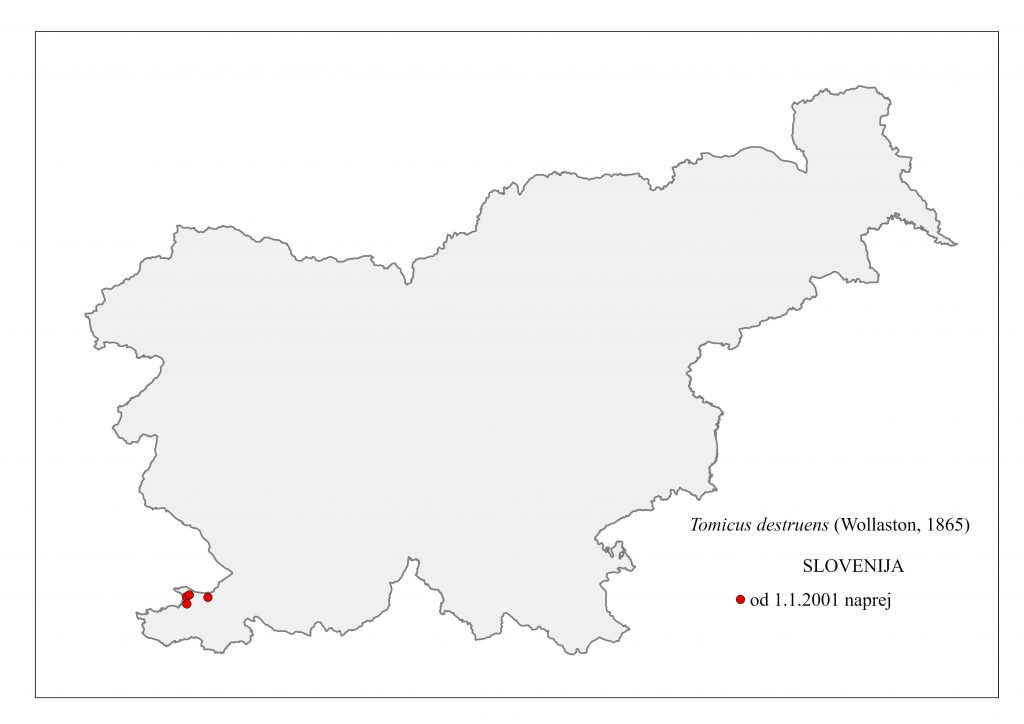
Figure 41: Tomicus destruens, distribution map according to historical and recent data
Ecology and presence in Slovenia
As a thermophilic species, T. destruens is distributed in the central Mediterranean area, Portugal (Madeira), North Africa and Asia. The species, which was described as early as 1865, has long been forgotten, so that records in Mediterranean countries have often been misidentified as Tomicus pinipreda. Hosts include the Mediterranean pines Pinus halepensis, P. pinaster, P. pinea, P. brutia, P. canariensis, P. radiata, rarely also P. nigra. In Slovenia, the species is exclusively restricted to Istria and the coast, and almost all records are the result of trapping (Figure 41). In addition to Mediterranean pines, is also probably locally inhabits P. nigra. In the middle and upper part of the trunk and on thick branches, they burrow longitudinal, 8-10 cm long, single-armed maternal galleries. The tunnels are mainly located in the bark and only weakly embedded in the sapwood. The maternal galleries are with 60-80 sinuous larval tunnels. A similar tunnel system is excavated by T. piniperda on continental pine species. Imago length is 4.0-4.8 mm. In Italy, T. destruens has been reported to be very common in dense Mediterranean forests affected by drought, fire or root fungus pathogens (Faccoli 2015). T. destruens mostly develops in winter. It is a secondary and, due to maturity feeding, a primary species in the piths of pine twigs.

